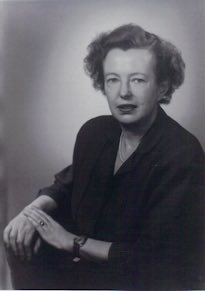Maria Goeppert-Mayer silently fought the injustices of the male-dominated field of science while at the same time tackled the mysteries of physics. The first American woman and the second woman ever to win the Nobel Prize in Physics, Mayer made extensive contributions to several different technical fields in physics.
By 1930, the same year she was married to Joseph Mayer, Goeppert-Mayer completed her thesis. In it, she calculated the probability that an electron orbiting an atom’s nucleus would emit not one, but two, photons or quantum units of light as it jumps to an orbit closer to the nucleus, a concept still cited today. That same year they moved to the United States from Germany when Joseph received an assistant professorship at Johns Hopkins University. Because the University had strict nepotism rules which forbade the hiring of Goeppert-Mayer, she continued to work without pay or formal academic status.
Within nine years, she produced ten papers applying quantum mechanics to chemistry, one of which became a milestone. Also, with her husband, she wrote Statistical Mechanics, a textbook that sold for 44 years.
Avoiding controversy and with little recognition, she quietly laid the groundwork for the later development of nuclear physics. As her husband changed positions, she continued her work unofficially at Columbia University and later at the University of Chicago. In Chicago, she worked part time as a senior physicist at the Argonne National Laboratory supported by a federal grant. Here she began her Nobel Prize winning project developing the shell model of the nucleus of the atom, the basic model for the description of nuclear properties.
In 1956, Goeppert-Mayer was elected to the National Academy of Sciences. In 1959, at age 53, after a thirty-year career, she was appointed a full time professor, with pay, at the University of California at San Diego. In 1963, she was awarded the Nobel Prize in Physics.

